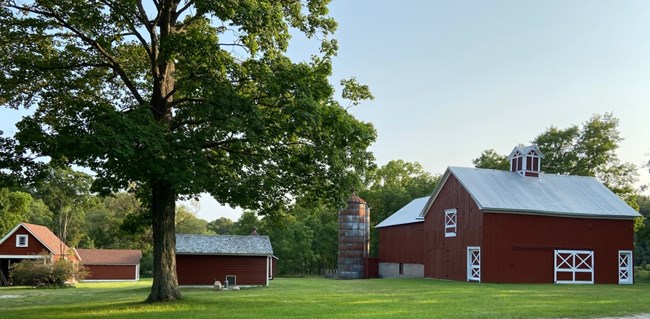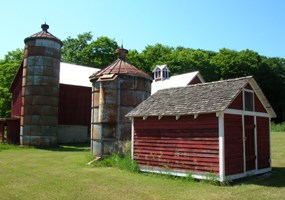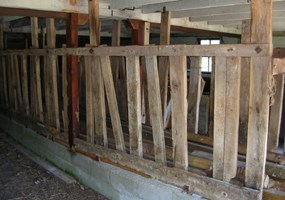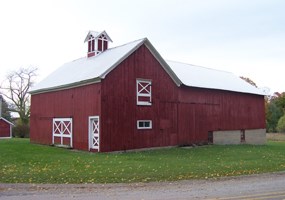
Susan Pocklington, Preserve Historic Sleeping Bear 
Susan Pocklington, Preserve Historic Sleeping Bear This picturesque farm was home to the Tweddle family. John Tweddle originally settled in this area around 1840 and built a log cabin at the present site of the Treat Farm about ½ mile from here. This was a one-room log house. The family built the larger house, now known as the Treat Farmhouse around 1880, and around 1895 they moved down to this site at the corner of Norconk Road. Some time later, the Crouch family purchased the farm from the Tweddle family. The farmhouse is now used for temporary housing for Lakeshore Staff, volunteers, and the Artist-in-Residence program. 
Kerry Kelly 2007 
Kerry Kelly 2007 This photo is taken from the south of the barn looking north up the feed bunk. Dairy operations can often be identified by the silos which were used to store chopped corn or alfalfa, which would ferment and provide a high energy food for the cows. This is a good example of a feed bunk used to feed the silage to the cows. The farmer (or his kids) would climb up into the silo and, using a pitch fork, dig out the packed silage and throw it down the chute to the little room at the bottom. The silage would then be carried in baskets or a wheelbarrow down the bunk for the cows to eat. The cows love this feed and they would clean it right up. There wouldn't be hardly a fleck of silage left in the bunk when they were done! 
Kerry Kelly 2007 
Kerry Kelly 2005 |
Last updated: August 26, 2021
